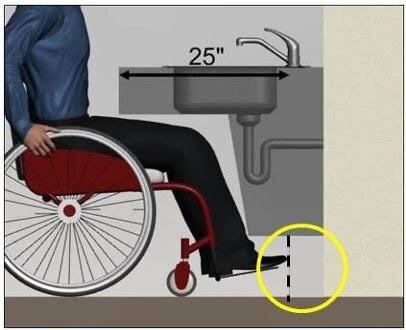
While it might be easy to navigate other parts of the house, the restroom is always a source of concern regarding accessibility for the Americans with Disabilities Act (ADA).
It would help if you made an in-depth and correct measurement to ensure your building’s restrooms is up to standard for ADA compliance. According to the Americans with Disabilities Act Accessibility Guidelines (ADAAG), below are some ADA basic guidelines for a single-user restroom:
The same ADA compliance guidelines apply for multi-user restrooms but with some additional elements. However, these things need to be handled by professionals to ensure the best Toilet ADA clearance. At All Things Inspector, we have everything required for ADA toilet clearance. We have trained experts with the complete ADA inspection tool kit.
To meet the ADA guidelines, sinks should be positioned at a height not less than 34 inches from the floor, and they should have enough space for knee clearance that is 26 inches high, 30 inches wide, and 11 to 25 inches deep. Also, insulated pipes should be installed below the sink, and there must be a clear floor space.
The faucets should be installed so that they can be operated with a lever, easily pushed or touched, and, for better convenience, can be electronically controlled. They should be installed so that they can be easily operated with one hand without the need to hold tightly, pinch or twist the wrist. Users shouldn’t be subjected to exerting too much energy to run a faucet.
ADA-compliant urinals should be wall-hung at a maximum of 17 inches above the floor and should be stall-type. Water closets must be 17 to 19 inches above the floor and be measured from the top of the toilet seat to the bottom. Like faucets, flush valves should be easily operated and shouldn’t require tight grasping, pinching, or twisting of the wrist.
Grab bars should be mounted at least 33-36 inches above the floor, should be 36 inches long on the rear wall, or lay 42 inches on the side wall. They must be mounted at least 1.5 inches from the wall with a gripping surface of at least 1.25 inches. They should be installed to withstand at least 250 pounds of pressure.

Certain tools must be in an ADA inspection tool kit without fail. These tools are essential in carrying out an ADA inspection. They include a

The Americans with Disability Act (ADA) is a federal law that is against discrimination against individuals with disabilities. This law is designed to ensure equal
